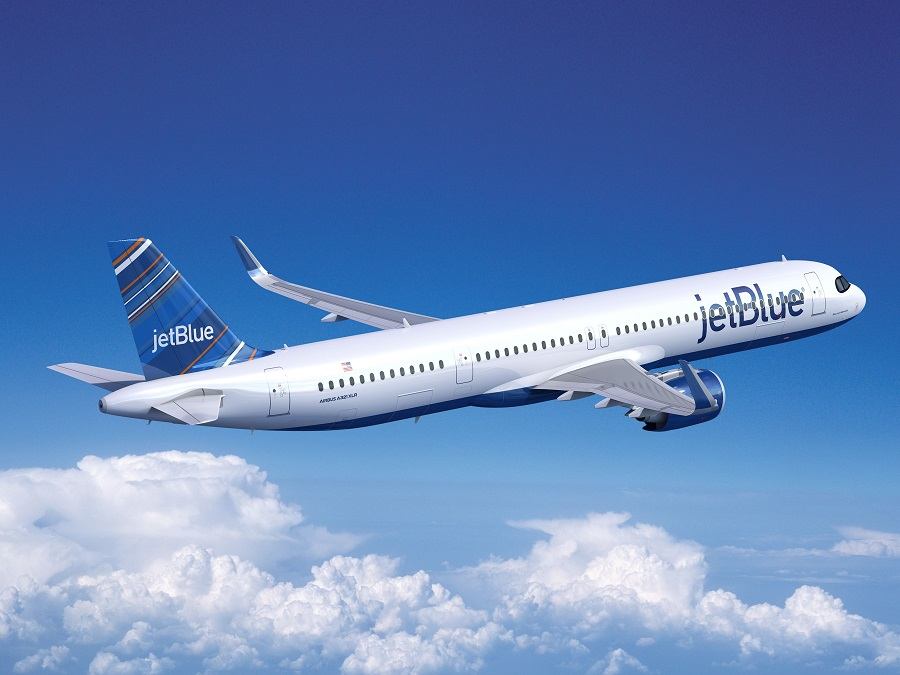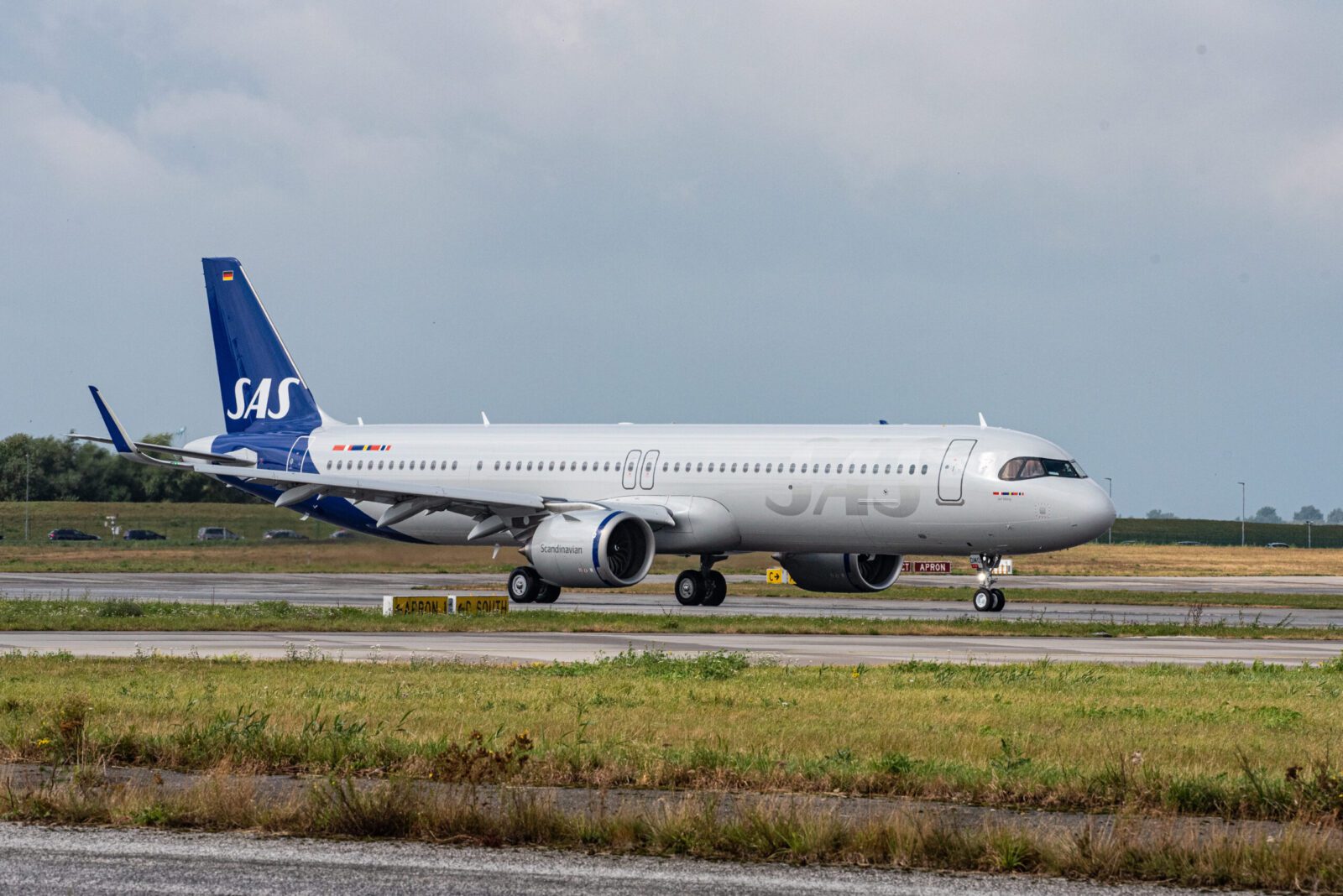Airbus is gearing up for production of the new A321XLR. The A321LR has already entered service, with promising results. In the process, Airbus will start another assembly line for the A321neo family from 2022. This will be in Saint Nazaire, replacing the A380 production line in that site.
At the moment, there are more lines in Saint Nazaire, manufacturing sections for the A320 family. Final assembly of all A321s now takes place in Hamburg. The new site will help expansion in this regard. Also, it will construct front sections for the A321. These differ slightly from those of the A320 and previous A321s, in having a different door layout.
The A321XLR will enter service in 2023, as it will take time to upgrade the site and set up production. But the A321LR recently celebrated 2 years in service. Already, the narrow-body has made an impression. And it has airlines eagerly waiting for its even longer-legged XLR brother.

When Airbus announced the A321LR and later the XLR, many saw them as niche models. They were certainly interesting, but some analysts thought they wouldn’t do all that well. Airbus countered that both aircraft could still fit the roles of a regular A321neo, as a worst-case scenario. But the aircraft are more expensive than standard A321neos.
But there’s another factor in play here: narrow-body capacities are increasing. This is obvious when looking at how aircraft orders have progressed over time. Before Airbus introduced the ‘new-engine option’ (neo) in its A320 family, the A321 accounted for about one-fifth of all orders. By 2018, the orders of the A321neo and its sub-variants, had reached one-third of all A320neo-family orders. At the lower end, the A319neo’s order book got a big hit from the A220.
Is The A321LR A 757 Replacement?
So with single-aisle airliners getting bigger, Airbus finds itself in an interesting position. The long-range A321s aren’t an oddity any more. To start with, the manufacturer expected the A321LR to attract sales from current users of the Boeing 757. The Airbus is more or less matched with the Boeing 757-200, in particular, in terms of passenger capacity and range. Except the A321LR is about 25% more efficient!
Still, the Boeing has been out of production for a while. And even if they were due for replacement, many didn’t see the A321LR as a game-changer, in the long-term. They were wrong. The plane has enjoyed very strong sales, both with new orders and existing A321neo orders switching over to it.

In April 2018, Airbus made a demonstration 11-hour flight from the Seychelles to Toulouse: 4,750 nautical miles. More recently, Air Transat flew the aircraft from Montreal, Canada, to Athens, Greece. This was an honest commercial 4,100 nautical miles. More operators like IndiGo are busy planning longer routes. Elsewhere, JetBlue is organizing its transatlantic crossings with the type.
Operators are being careful. The Covid-19 era is placing limits due to low demand and rules, that distort true potential. Also, low-cost carriers have been bitten by long-haul plans before. But many of those plans involved new aircraft types. This time, Airbus makes things a bit easier for airlines.
The manufacturer designed its A321LR/XLR to work well in shorter routes as well. The XLR new centre-rear tank is now part of the centre-box structure. So, it isn’t too heavy to be a problem in shorter routes. Other auxiliary tanks are removable. And the new (“flex”) door layout still permits use with a dense ‘short-haul’ seat layout.
Can Airbus Stretch the A321 further?
Demand has been strong enough that Boeing’s proposed New Mid-size Aircraft has got Airbus thinking of a stretched A321XLR. This is a new idea. While Airbus’ A321XLR has differences in its doors and other details, it is the same length as the original A321. But stretching it would give it more seats and make it a better proposal, to replace old Boeing 757-300s.

A small stretch would allow adding one or two more rows of seats. But it’s not so easy. It would probably require either more powerful engines, or a newer, lighter wing and possibly strengthened landing gear. And the stretch of the fuselage itself has other implications. Basically, Airbus will have some of the compromises in field performance as Boeing’s longer variants of the 737.
With Boeing’s plans for a newer aircraft now on hold, Airbus’ A321LR/XLR models cope well with the competition. The 737 MAX10 will likely hit the market about the same time as (or a bit before than) the A321XLR. But the Airbus will have the range advantage.
It is difficult to say who of the two manufacturers will come out on top here. It’s not easy to judge how crucial the extra range of the A321LR/XLR will be, but the airlines like the options. And with the Covid-19 crisis still at play, money for further projects is short. So, it is up to the current line-ups, to perform.




2 comments
Spyros
In theory, they two types have similar efficiency, so it shouldn’t be impossible for Boeing to do so. But it’s a question of budget. Boeing will be busy trying to get back on track, after the MAX saga and now corona. Will they spend time/money incorporating a structural middle tank to it, or concentrate on something else (797)? We’ll see, but if Airbus’ LR/XLR really pick up, they probably won’t be able to ignore them…
Andrew Steitz
I am not a “fanboy” of either manufacturer. There are some things I like better about each company and as a US citizen I root for “the home” team when I can but I think the 321 line especially with the LR and XLR variants will really put the pressure on the 737. Boeing better be figuring out to make extended range versions of the venerable type (and do it safely) if they want to survive.